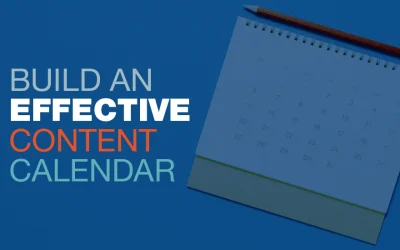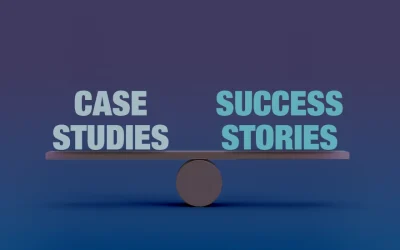Understanding and Solving Your Customer’s Challenges
People often misunderstand the true purpose of marketing. Some think it is to design and write content. Others think it is to manage ads and hand off perfectly qualified leads to your sales reps. These are just a few important functions of the marketing department but they aren’t the most important purposes of marketing.
Engineers and technical folks don’t design compelling graphics or write persuasive marketing content. It isn’t because they aren’t smart enough. These are some of the most brilliant people in business.
Not everyone understands how to break down complex information in a way that resonates with a target audience. This is what marketers specialize in. We help show clients how our companies can solve their problems in a way that’s quickly understood.
Marketers leverage customer pain points to persuade people. To consistently attract the right buyers, marketers need to first:
- Identify prospective customer’s pain points.
- Find ways to address those pain points in their marketing messages.
Identifying Common Customer Pain Points
Identifying potential customers’ pain points can be harder than you think. Asking clients why they came to your business is a great starting point. Each client is unique and will have different reasons for choosing you over a competitor.
Learn what these reasons are and use them to build a list of shared pain points. However, your customers may not even know their pain points or be able to verbalize them.
Humans often don’t understand their feelings. When asked, clients may share simplistic feedback without considering their answers.
Luckily, there are common pain points most people have in life. Here is an overview of some common ones. You can use these as a starting point to develop more specific questions for clients. Then as you learn more, you can customize and hone this list to match your audience.
Pain Points
- Lack of Time
- Lack of Growth
- Budget Constraints
- Limited Resources
- Turnover
- Compliance
- Unreliable Partners, Teams, or Vendors
- Long Sales Cycles
- Disruptions
- Customer Retention
Lack of Time
“All we have to decide is what to do with the time that is given us.” —J. R. R. Tolkien
Time is one of the most valuable resources we have. I love the quote above by Tolkien in The Lord of the Rings. These are wise words and a challenge most people face daily.
Saving people time is important. If your product or service can do that, it should be a top pain point you obliterate with your messaging.
Lack of Growth
Most people, like you, want to grow and improve their lives. We want more money, better careers, and improved relationships to name a few areas. Feeling stagnant is a major pain point to address. Solutions that promote growth, help people overcome obstacles, and move people forward are appealing to many audiences.
Budget Constraints
B2B buyers are often budget-conscious out of necessity. Positioning your company as a low-cost provider isn’t always beneficial. Instead, demonstrating the ROI of your product or service can make a stronger impact. If your customers have tight budgets, emphasize how your product boosts their long-term savings or earnings in your marketing.
Limited Resources
Limited resources are kind of a catch-all. We typically don’t use this to address financial pain points or time, because those are already in separate buckets. Limited resources can mean a lot of different things, like:
- Limited team size
- Limited technological capabilities
- Limited knowledge
- Limited skills
- Limited tools
- Limited customer service capabilities
The “resource” will change depending on your audience and industry. Only use this pain point if your ideal clients have several resources that your products or services supplement or enhance.
Staff Turnover
Many companies have ongoing issues with turnover. Things like economic factors, industry-specific challenges, or other internal issues could be the culprit. Companies facing high turnover need solutions to improve retention rates. Stress your capabilities in this area if you have them.
Compliance
This might seem like an odd pain point at first. Yet, many industries and companies need help meeting compliance standards. Credit Card and POS companies are just a few of many who share this burden. Companies that don’t meet required compliance standards face different risks from different sources, whether government or customer trust.
A growing area that almost every business will be facing is ensuring websites and other resources are ADA-compliant. Also, many companies want to keep employees safe and must meet OSHA requirements.
Many companies often find compliance burdensome as they need to meet requirements in various areas. Keep this in mind if your solution or service can help prospects with this pain point.
Unreliable Partners, Teams, or Vendors
This is a bit more of a niche pain point, but it is still valid for many companies. If your prospects have internal team members, company partners, or vendors that fall short, this is a huge pain point. It can result in greater headaches, lost revenue, and missed opportunities. If you can enhance team communication, offer a business intelligence dashboard, or address other related issues, make sure your prospects are aware.
Long Sales Cycles
Sales cycles can be fairly complex and long in the B2B world. B2B buying cycles are increasing, and the number of stakeholders and touch points needed to make a sale are also increasing. Some salespeople reported their cycles can be as short as 1 month, but for many, it is 4 to 18 months or longer.
An already complex selling environment seems to be getting even more cumbersome in recent years. If your offerings speed up sales cycles for salespeople and organizations, make it a key part of your message.
Disruptions
I’m sure we all have COVID-19 and pandemic fatigue at this point. That time in history was incredibly disruptive. It messed up the global supply chain and things are still not back to “normal” after nearly 4 years.
Disruptions happen. Economic factors, political factors, and other unexpected events can cause unforeseen changes. Most companies want and need stability to accurately predict and hit their forecasts. If you can prevent disruptions and reduce risks for your clients’ business operations, make sure to include that in your marketing messages.
Customer Retention
This is pretty obvious, but businesses need customers. No one wants to lose business and experience high churn rates. If your company’s tools or software improve customer retention rates, include that as the key part of your marketing message.
Top Strategy for Addressing Customer Pain Points
Companies don’t buy your products, they buy solutions to their problems. You can have the greatest software on the market but you need to tell customers how it will help them and why they need it. Otherwise, your messaging and attempts to attract them become additional noise in an already blaring cacophony of nonsense.
How do you use customer pain points to your advantage?
- Show customers that you understand their challenges.
- Demonstrate how you have helped other companies with similar challenges.
- Refine your messaging accordingly.
You can accomplish all three of these points by creating and leveraging success stories.
Success Stories: Turning Challenges into Opportunities
Depending on your level of marketing experience, the word “case study” may confuse or excite you.
Several years ago, we stopped using the term case study. It sounds boring and overly academic. We prefer to call these pieces Success Stories. They share a similar purpose, but a success story is more engaging and fun to read. Clients have shared how prospects have responded positively to success stories we’ve written on their behalf.
Whatever you choose to call them, case studies and success stories are a type of marketing collateral. Both help explain how your service or solution solves your customers’ pain points and builds trust with your audience.
Success stories help you tell your audience how you helped a client in the same market, niche, region, etc. solve a common pain point. You tell it as a story and include facts and data to back up what you are saying.
Well-written success stories invite readers to explore how you can assist them in overcoming similar challenges. Ideally, you should have a success story for each pain point you help clients solve.
After creating your success stories, start using them to close deals! Feature them on your website, send them to prospects, post them on social media, and don’t be shy to reference them often. Over time, they will help you close more deals.
You may discover that one or two success stories are more impactful than the others. Distill the essence of these stories and integrate them into your website homepage and other marketing materials.
Start Turning Pain Points into Profits. Get Started on Your Next (or First) Success Story
Identifying and using customer pain points helps generate more leads through your content marketing strategy. If you don’t have a list of customer pain points, begin by interviewing your top clients. Use the provided list above as a starting point.
Once you identify customer pain points, begin crafting your success stories to explain how you can help your audience. Once they’re created, share them with your email subscribers and post them on social media.
If you need help creating marketing content, like success stories, we can help you! We’ve been writing success stories for nearly two decades and would love to give you a hand. Contact us using the form below and one of our talented team members will be ready to assist you!





0 Comments